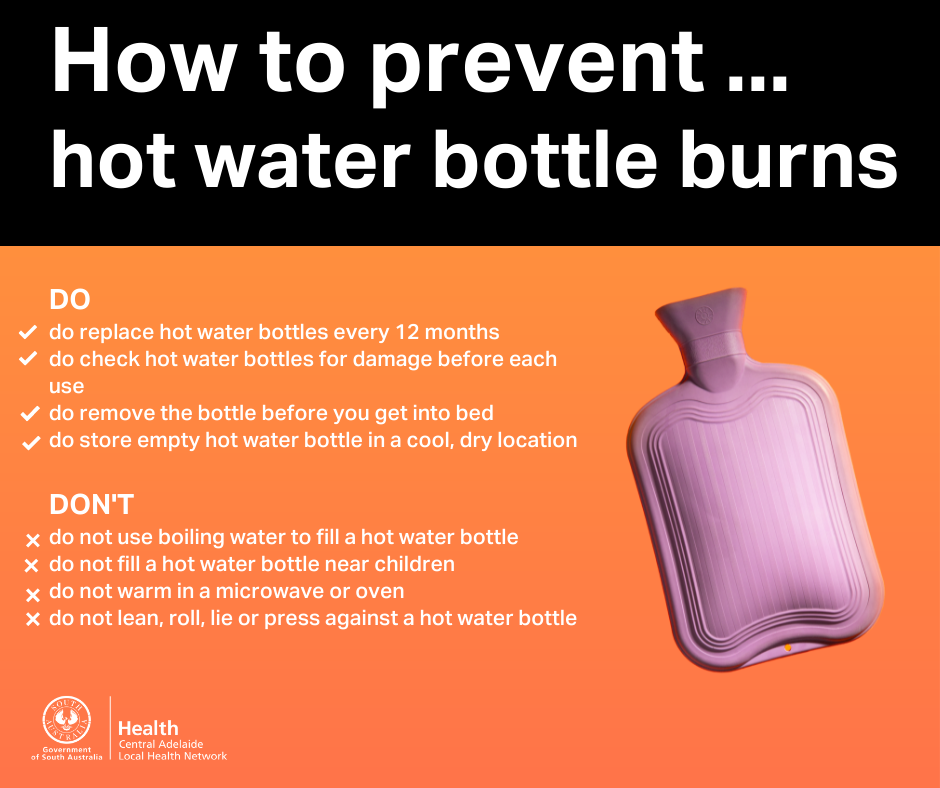Lobethal grandmother, Frieda, used to follow a night-time ritual of pre-warming her bed with a hot water bottle.
“I have been using hot water bottles for 40 years to warm it up before I get in and I’ve never had any problems,” she recalls.
“I have three or four that I use, and I just grabbed one, filled it and put it into bed.
“I must have grabbed an older one and normally I shift it away, but this time I didn’t push it far enough away.
“This time I pulled the covers back and laid on it.”
She recalls water “whooshing” out of a 20 cm crack along the bottom of the bottle, burning her thigh.
“I rang my daughter and she told me to get straight in the shower to cool it down,” she says.
“When she arrived, she had a look and quickly called the ambulance.”
Frieda was taken to the adult burns service at the Royal Adelaide Hospital (RAH), spending five days in hospital receiving treatment for the “very painful” burn.
Her treatment involved the application of silver dressings, pain relief, quality nutrition and fluids and physiotherapy to promote movement around the site of the burn.

“Reconsider” hot water bottle use
June is National Burns Awareness Month and Frieda says her experience had made her reconsider hot water bottles.
“Don’t use them, or if you do, remove it before getting into bed,” she says.
“And be very careful using older hot water bottles because they are more vulnerable to breaking.”
She says her family binned all of her hot water bottles before she was discharged from the RAH.

All burns “to be taken seriously”
Advanced Nurse Unit Manager for the RAH’s Adult Burns Centre, Natalia, says all burns should be taken seriously, with a serious burn becoming a lifetime injury.
“The correct first aid, even for a minor burn can have a huge impact on the severity of the injury,” she says.
“During winter there is an increased risk of burns from using hot water bottles, fires, heaters and warm drinks as we try to stay warm.”
Treating a burn
If someone is burnt, you should:
- Cool the burn with cool running water for at least 20 minutes.
- Remove clothing and jewellery.
- Wrap affected area in the clean cloth and elevate.
- Seek medical advice.
Natalia praised Frieda’s daughter’s response to urge her mother to run cool water over the burn site in the shower.
“Cooling is critical immediate after a burn injury,” she says.
“By applying cool running water to the burn for 20 minutes, within three hours of the injury occurring, you reduce the burn size and depth.”
Useful resources
Find out more about burns awareness by visiting the following websites:



